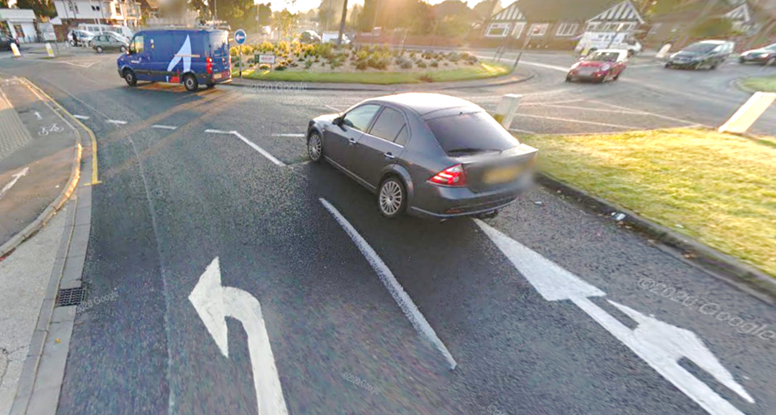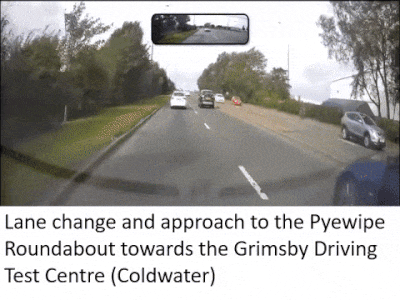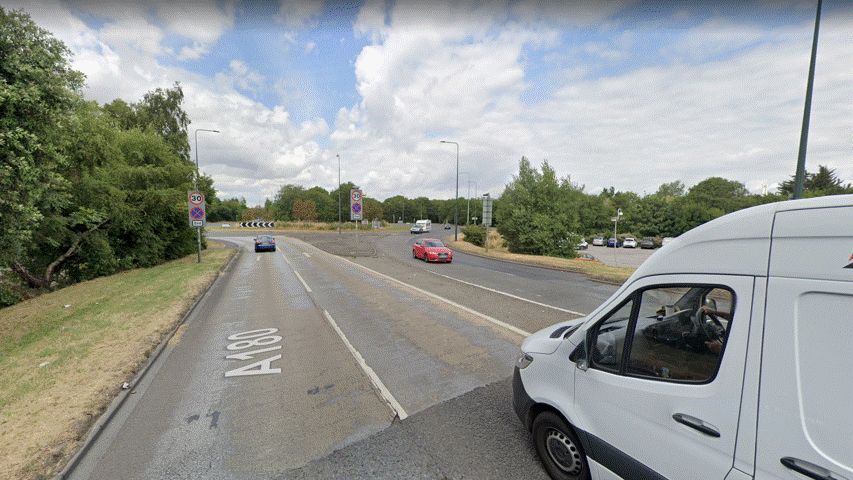This page is a work in progress. 30/09/23 please re-visit regularly STh
Roundabouts
Roundabouts have become an increasingly popular traffic management tool due to their ability to improve traffic flow, reduce delays, and reduce the number of potential conflicts. However, many drivers find them confusing and difficult to navigate. Here, we provide a comprehensive guide to effectively and safely navigating roundabouts, so that you can feel confident the next time you approach one.
Understanding Roundabouts
Roundabouts can be complex traffic features, but with a little knowledge and practice, you can navigate them safely and confidently.
First and foremost, it's important to understand the purpose of a roundabout. Unlike traditional intersections controlled by traffic signals or stop signs, roundabouts are designed to keep traffic flowing smoothly and efficiently. They achieve this by directing vehicles in a clockwise direction around a central island, allowing for continuous movement without the need to stop.
To navigate a roundabout correctly, it's essential to understand the right-of-way rules. Vehicles already inside the roundabout have the right of way, so you must give way to them before entering, as you would at any other junction. Additionally, when approaching a roundabout, always look for and obey any signage or road markings indicating the proper lane to use for your desired exit.
Remember, entering a roundabout can be intimidating, but with practice, it becomes easier and more natural. Always give way to traffic already in the roundabout, signal your intentions clearly, and merge smoothly into the flow of traffic. It's crucial to maintain a steady and appropriate speed while inside the roundabout, ensuring you exit in a timely and safe manner.
By understanding the purpose of roundabouts and the rules of the road associated with them, you can navigate these traffic features confidently and correctly. This knowledge will not only help you feel more comfortable when encountering roundabouts, but also contribute to a safer and more efficient driving experience for everyone.

Collision Points
This image highlights the possible number of collision points there are on each type of junction. These are points where crossing vehicles might "share" space when negotiating the junction.
As you can see, there are many more points on the crossroads than the roundabout (Please note, these are crossing points, and as such, do not preclude you driving into the back of another vehicle!!) so remember to look where you're going.
Rules of the road at roundabouts
Navigating roundabouts can be a bit intimidating, but understanding the rules of the road at these traffic features can make the process much smoother. Here are some important rules to keep in mind when approaching and manoeuvring through a roundabout.
First and foremost, remember that vehicles already inside the roundabout have the right of way. So, before entering, you must give way to the traffic already circulating. This is crucial for maintaining a safe and efficient flow of traffic.
When approaching a roundabout, it's essential to be attentive to signage and road markings indicating the proper lane for your desired exit. This will help ensure you navigate the roundabout correctly and avoid any last-minute lane changes that can be dangerous.
While inside the roundabout, maintain a steady and appropriate speed. Do not stop or slow down unless it is necessary to yield to incoming traffic. This will help prevent traffic congestion and keep the flow moving smoothly.
Lastly, always signal your intentions to other drivers. Use your turn signal to indicate when you plan to exit the roundabout, giving other drivers ample time to react and adjust their own manoeuvres accordingly.
By following these rules, you can confidently and safely navigate roundabouts, contributing to a more efficient and enjoyable driving experience for everyone on the road.

Approaching a roundabout – Step by step
Approaching a roundabout can be a nerve-wracking experience, especially for drivers who are unfamiliar with these traffic features. However, with a few simple steps, you can navigate roundabouts confidently and safely.
As you approach the roundabout, slow to an appropriate speed. As you approach avoid coming to a complete stop unless necessary. Maintain a steady speed that allows for a smooth transition into the roundabout.
Next, identify the proper lane on approach for your desired exit. Look for signs and road markings that indicate which lane to use. Plan your lane selection well in advance to avoid last-minute lane changes.
As you enter the roundabout, give way to any traffic already in the roundabout. This is crucial for maintaining the flow of traffic and preventing potential accidents. Wait for a clear gap in traffic before proceeding.
Once you enter the roundabout, keep your eyes on the road and be aware of other drivers. Use your turn signals to communicate your intentions to other drivers. Signal early and clearly to let them know which exit you will be taking.
As you approach your exit, slow down and prepare to exit the roundabout. Give way to pedestrians and cyclists, if applicable, and safely merge into the appropriate lane.
By following these steps, you can approach a roundabout with confidence and navigate it safely. Remember, practice makes perfect, so don't be discouraged if it takes a few tries to get the hang of it.

Entering and Navigating a Roundabout: Best Practices
Entering and navigating a roundabout can be a daunting task, but with the right knowledge and techniques, it can be done smoothly and safely. Here are some best practices to keep in mind when approaching a roundabout.
Firstly, make sure to approach the roundabout at a reasonable speed. Slow down as you approach but try to maintain a steady speed so that you can seamlessly merge into the flow of traffic. Coming to a complete stop can disrupt the flow and cause delays for other drivers.
Next, always give way to vehicles already inside the roundabout. This is crucial for maintaining a safe and efficient flow of traffic. Wait for a clear gap before entering and merging into the roundabout.
As you navigate the roundabout, stay focused and aware of other drivers. Keep your eyes on the road and use your turn signals to indicate your intentions to other drivers. Signalling early and clearly will help them anticipate your movements and adjust their own accordingly.
Lastly, when approaching your desired exit, begin signalling your intention to exit in advance. This will give other drivers behind you ample time to react and adjust their positions accordingly.
Remember, practice makes perfect. Don't be discouraged if it takes a few tries to get the hang of navigating roundabouts. By following these best practices, you'll be able to enter and navigate roundabouts confidently and safely, contributing to a smoother driving experience for everyone.
Tips for Driving in Heavy Traffic or at Busy Roundabouts
Driving in heavy traffic or at busy roundabouts can be a daunting experience for many drivers. The increased number of vehicles and the need for quick decision-making can make navigating these situations feel overwhelming. However, with a few tips and strategies, you can navigate heavy traffic or busy roundabouts with confidence.
Firstly, it's important to stay calm and focused. Take a deep breath and remind yourself that you have the skills to handle this situation. Avoid rushing or making sudden movements, as this can lead to accidents or conflicts with other drivers.
Secondly, give yourself plenty of time and space. Anticipate the traffic and plan your route accordingly. Leave earlier if necessary to avoid the busiest times. When approaching a busy roundabout, make sure you have a clear understanding of your exit and the lane you need to be in.
Next, be patient and co-operative. Allow other drivers to merge and change lanes, and always use your turn signals to communicate your intentions. Keep a safe distance from the vehicle in front of you to allow for sudden stops or lane changes.
Lastly, be aware of your surroundings. Stay alert and constantly scan for potential hazards or changing traffic conditions. Keep an eye on pedestrians, cyclists, and other vehicles, and give way to them when necessary.
Remember, practice makes perfect. The more you navigate heavy traffic or busy roundabouts, the more comfortable and confident you will become. By following these tips, you can navigate these challenging situations safely and efficiently, contributing to a smoother and more enjoyable driving experience.
Handling Challenging Scenarios at Roundabouts
Roundabouts can present challenging scenarios for drivers, especially when faced with certain situations. One of the most common challenges is encountering large vehicles, such as trucks or buses, in a roundabout. These vehicles have a larger turning radius, which means they may need to swing wider to navigate the roundabout. It's important to give them plenty of space and avoid trying to pass them while inside the roundabout.
Another challenging scenario is dealing with aggressive or impatient drivers. Unfortunately, some drivers may not yield properly or try to cut in front of you. In these situations, it's important to stay calm and focused. Maintain a safe distance from the vehicle in front of you and be prepared to yield if necessary. Remember, your safety is more important than asserting your right-of-way.
Navigating multi-lane roundabouts can also be challenging, especially when it comes to changing lanes. Always check your mirrors and blind spots before changing lanes and be aware of the movements of other vehicles around you. Signal your intentions clearly and give other drivers enough time to react.
Lastly, don't panic if you miss your exit. Simply continue around the roundabout and take the next available exit. Trying to make a sudden manoeuvre to reach your desired exit can be dangerous and disrupt the flow of traffic.
Handling these challenging scenarios at roundabouts requires patience, awareness, and staying calm. By following these tips and practicing your roundabout navigation skills, you can navigate any challenging scenario with confidence and safety.
Common Mistakes to Avoid When Driving in Roundabouts
As much as we try to be perfect drivers, we all make mistakes from time to time. When it comes to navigating roundabouts, there are a few common mistakes that many drivers make. By being aware of these mistakes, you can avoid them and navigate roundabouts more effectively and safely.
One common mistake is not giving way to vehicles already inside the roundabout. Remember, they have the right of way, so always wait for a clear gap before entering. Another mistake is not signalling your intentions. Using your turn signal is crucial for communicating with other drivers and preventing confusion.
Another mistake is not maintaining an appropriate speed while inside the roundabout. Going too fast can make it difficult to merge or exit safely, while going too slow can cause traffic congestion. Finding the right balance is key.
Lastly, many drivers make the mistake of changing lanes within the roundabout. Stay in your lane until you reach your desired exit unless circumstances dictate otherwise (road works)
By avoiding these common mistakes, you can navigate roundabouts confidently and safely, contributing to a smoother and more efficient driving experience for everyone on the road.
In Summary
In conclusion, roundabouts may seem intimidating at first, but with a little knowledge and practice, you can navigate them effectively and safely. Understanding the purpose of roundabouts, the right-of-way rules, and the proper techniques for approaching and manoeuvring through them is essential.
Remember to always give way to vehicles already inside the roundabout, look for signage indicating the proper lane to use, and maintain a steady and appropriate speed while inside the roundabout. Signal your intentions to other drivers and merge smoothly into the flow of traffic. This image highlights the possible number of collision points there are on each type of junction. These are points where crossing vehicles might "share" space when negotiating the junction. As you can see, there are many more points on the crossroads than the roundabout (Please note, these are crossing points, and as such, do not preclude you driving into the back of another vehicle!!) so remember to look where you're going.

Position on Approach
This image highlights where you need to position your car to turn left on this roundabout and maintain some left lock
The car on the right could go straight on, or turn right. Either way, this car will still pull left on entry, and you will need to ensure you do not 'straighten' the steering wheel on entering the roundabout. This will direct you towards the RHLane. This is a common fault when 'staring' too long on approach or waiting for a gap

Anticipation & Forward Planning
This image is a (low quality) section of our Pyewipe Roundabout video The full video can be viewed HERE. (Opens video in new tab on YouTube). When given the instruction to turn Right 3rd exit your 1st priority is to safely (MSPSL) position your car in the RHLane. Then using your approach routine, negotiate final approach and safe entry onto the roundabout
Exiting the roundabout is discussed in the full Pyewipe roundabout section
To view the best video on YouTube about judging when to go at Roundabouts see below:


